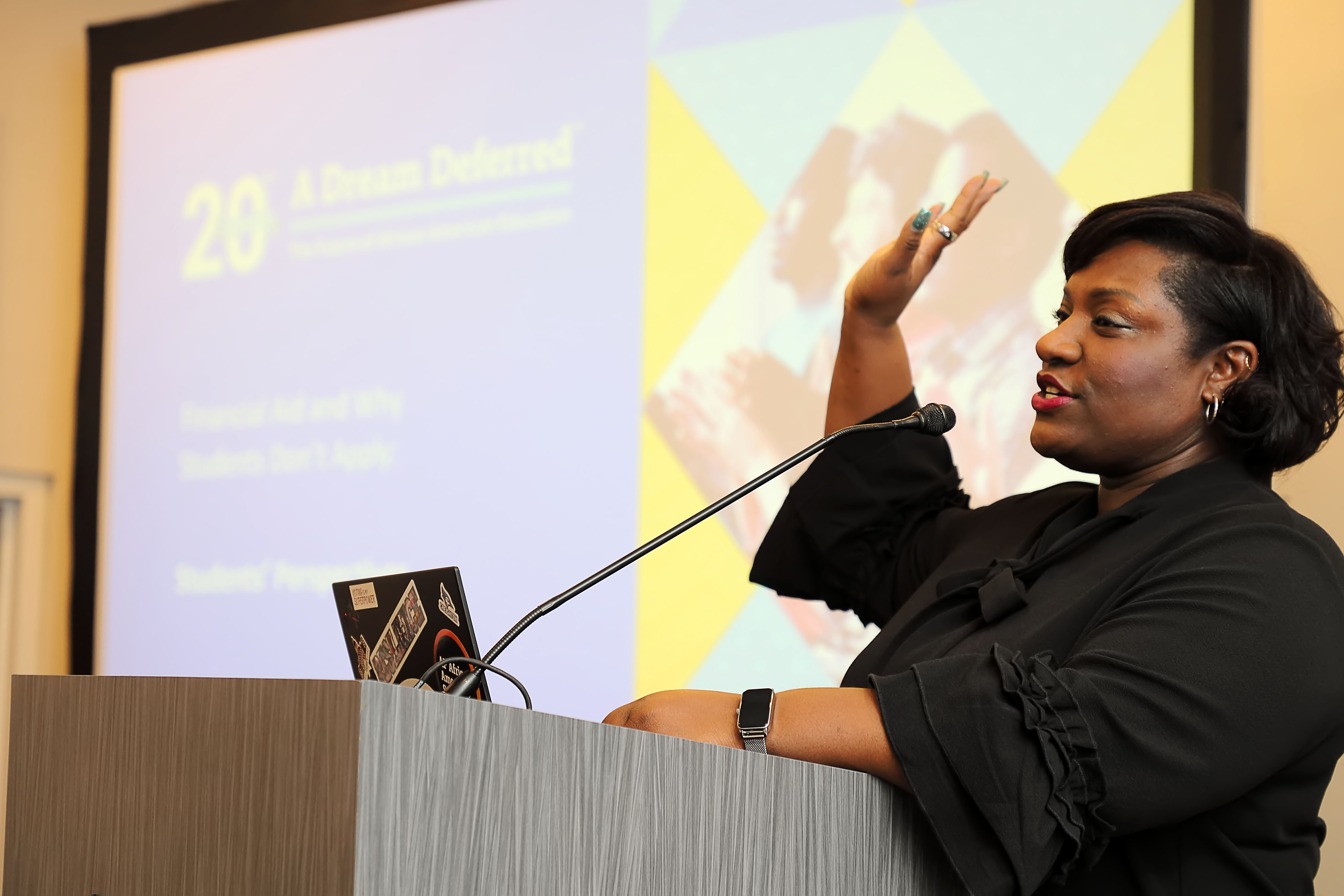A Dream Deferred | HBCU Conference 2024
Why Students Don’t Apply for Financial Aid: Research on Students’ Perspectives

Pictured: Dr. J Sharee Eggleson at the 2024 A Dream Deferred conference
It’s well known that a lot of financial aid goes unclaimed every year, to the tune of $24 billion. Free tuition programs are not attracting students as much as possible; one key reason for that is they require FAFSA® participation. The Free Application for Federal Student Aid is the biggest barrier to financial aid; not race, gender identity, geography, disability, or economy. Upon digging into this phenomenon, I wondered, what do the kids say?
At the A Dream Deferred™ conference, I shared my research findings with a room of educators from K-12 and higher ed.
Who are the students?
The students were in the class of 2023, attending high school in a Texas suburb. There was a total of 19 participants: 56% Hispanic/Latino, 33% Black, 11% White, 56% female, and 44% male. All participants were college eligible, meaning that their GPA and any college entrance exam scores would lead to college/university admittance.
What did the students say?
Cultural Implications
- Fear of the consequences of making mistakes on the FAFSA. (Would law enforcement or other authorities get involved?)
- Future ramifications i.e., a potential future draft.
- Parents’ ability to locate necessary information. (Also, whether they can trust students not to lose it or have it fall into the wrong hands.)
- Lack of awareness of IRS connection.
- Fear of debt or debt repayment; many believed it to be a loan or loan application.
- Families do not openly discuss finances.
- Families may not have conversations about college-going culture.
- Parents do want students to apply.
Misinformation
- Never heard of the FAFSA. (Its purpose is unknown.)
- The belief that the FAFSA is a loan that must be repaid.
- Unaware that the FAFSA connects students to national and local scholarship opportunities.
- Unaware of anyone else who has completed the FAFSA.
- Mystery around process and difficulty of paying for college/affordability.
- Parents make too much money for students to apply.
- The form is too difficult/too long.
Systemic Complications
- Family contribution mistaken for expected payment.
- Nuanced language on the FAFSA.
- The FAFSA is only available in its entirety in English.
Technical Difficulties
- Fear of random audits; students do not know the word “audit.”
- Forced log-out.
- Lack of account recognition.
- System crashes.
- Lockouts.
- Missing/removed accounts.
- Unscheduled downtime.
Next steps for educators
Identify: What is working and what is not, students in need, and gaps in systems.
Treat: Establish a method for disseminating clear and accurate info, develop teams with leads, create processes that include mentoring.
Track and study: Awareness of strengths/weaknesses, consider participant feedback, make adjustments as needed (year-to-year/case-by-case)
Seeing minimal narrative data on the topic, I decided to create some. The treatments I implemented (info sessions and mentoring) led to FAFSA completion for all participants, all of whom recommended the treatments for their peers. I spoke to students about their perceptions and reservations in a way that can inform best practices moving forward. I interviewed the students to find out what their perceptions were before treatment. I provided an information session to bring students’ understanding on-level. Then, I walked them through the FAFSA application. Finally, I asked them about their experience.
This research can be found on ProQuest.




